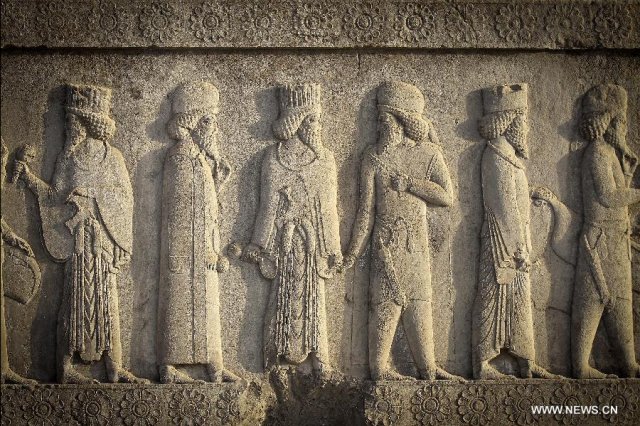MessageToEagle.com – Over the last 100 years, ancient complex of Persepolis has been an area of long-term excavations.
Among the recent discoveries made by archaeologists, there are is a great ancient gate in Persepolis in Tale-Ajori.
The ancient land of Persia is the place of the remains of the many mighty empires that once thrived there.
Persepolis – (Greek name from perses polis for ‘Persian City’) for the ancient city of Parsa ‘City of The Persians’ – has its location seventy miles northeast of Shiraz in present-day Iran.
Once it was Persia’s great capital of which construction began in 518 BC under the rule of King Darius the Great (who reigned 522-486 BCE).

But the glory of the city was first of all due to contributions made by Xerxes I and Artaxerxes III, both of whose names have been found (besides that of Darius) inscribed on tablets, over doorways and in hallways throughout the ruins of the city.
Once, Persepolis welcomed visiting dignitaries from Ethiopia to India each year, today there are only ruins in form of columns of Xerxes great palace and walls covered with impressive carvings and reliefs.
“One of the most important sections of the region immediately leading to Persepolis is the northwestern part of the royal seat which is also called Firouzi Complex, on where the studies conducted by archeological expeditions have been focused, is where now lies the relics of a famous monument called Tale-Ajori,” Chavardi pointed to the group’s excavations in Tale-Ajori,” according to Alireza Askari Chavardi of Shiraz University, the head of the group cooperating with and Professor Pierre Francesco Caglieri, of Italian University of Bologna, Italy.

“Any comprehensive study of Tal, located 3km west of Persepolis, should include it in a broader framework informed by past research conducted in Parseh; as in past studies, we assume as well that the region in the vicinity of Firouzi garden had been part of a city relevant to royal seat in Persepolis.”
“The remains of Achaemenid ascendancy near Firouzi village has only gradually attracted interests of the archeologists who studied the areas surrounding the royal seat to locate the Royal Sacred Place in the broader limits of the city for nearly 100 years.”
“The most important findings of this season of excavations are 30 pieces of glazed bricks adorned with images of winged animals, incorporating mythic beasts of Elamite and Achaemenid (c.550-330 BCE) eras in the tradition not unlike traditions of Shusha and Mesopotamia in southwestern Iran.”
As described by archaeologists, the outer parts and the great hall of the gate of this section of Parseh are decorated with colorfully glazed bricks, and thousands of pieces of bricks, each in 33 by 33 by 11 dimensions, have made the building; now however, the majestic building was turned to a pile of dust, hence called by local people as Tale-Ajori,” said the archeologist.
The terrace where the royal houses have been built envisages an urban landscape for Achaemenid palaces with more than 100 ancient objects and great monumental works in the vicinity of the royal seat, buildings scattered in an area of 600 hectares around the Persepolis, with gardens interspersed among these buildings.
Archaeologists reconstructed the geomorphologic landscape of Persepolis, the city built with the help of advanced technology that contributed to the results clearly seen even today.
MessageToEagle.com






